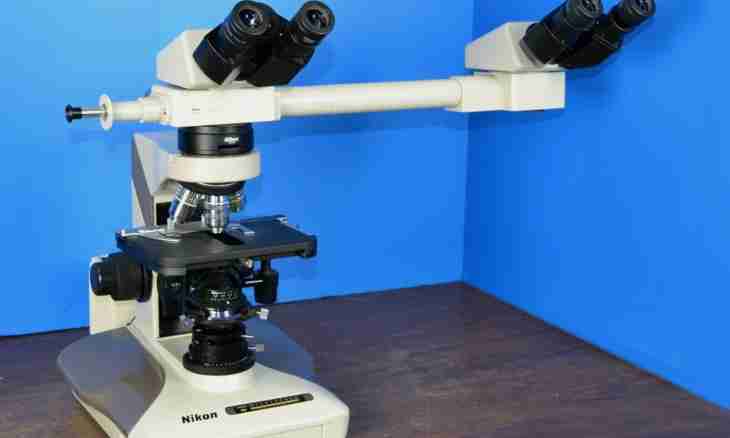In the latest microscopes it is possible to see particles of 50 nanometers in size. But also the usual microscope is quite enough for carrying out laboratory works of average complexity. How to adjust a microscope, without resorting every time to the help of technicians?
Instruction
1. Establish a microscope so that it was convenient to work at it without tension. Legs have to be located freely under a table. The microscope has to be located on a table so that eyepieces were approximately at the level of its edge. Choose such height of a chair that eyepieces there is a little higher than the level of eyes that it was possible to look, without bending.
2. Adjust coordinate table on axes X and Z so that its movement was carried out without excessive efforts.
3. Adjust eyepieces. Usually at a microscope only one eyepiece with adjustment (it is admissible, left). Set this eyepiece to neutral position (on "0"). Close at first the left eye and by means of movement of a table focus the image in right. Close the right eye and focus the image in left, rotating rings of control of an adjustable eyepiece.
4. Adjust lamp brightness. It can be done in various ways: to reduce a diaphragm, to reduce heat of a lamp or to use the neutral filter with absorption coefficient, optimum for your work.
5. Correctly use color filters. So, working with medicines for which color has no defining value (for example, chromosomes), installation of the blue filter will increase the resolution of the device and will improve quality of the image.
6. You will correctly expose lighting. For this purpose it is necessary: - to establish a lens of average increase; - to set the condenser precisely to extreme top position; - to focus the image of medicine, rotate a table; - to close a field diaphragm (is located below); - to establish sharpness by means of the condenser; - to fix the condenser by means of adjusting screws; - to open a field diaphragm to external border of a field of vision.
7. Use integumentary and subject glasses correctly, working only with integumentary during the work with a lens with a big aperture (usually 0.17 mm). If you constantly work with such lens, place integumentary glass on subject for improvement of the image.

